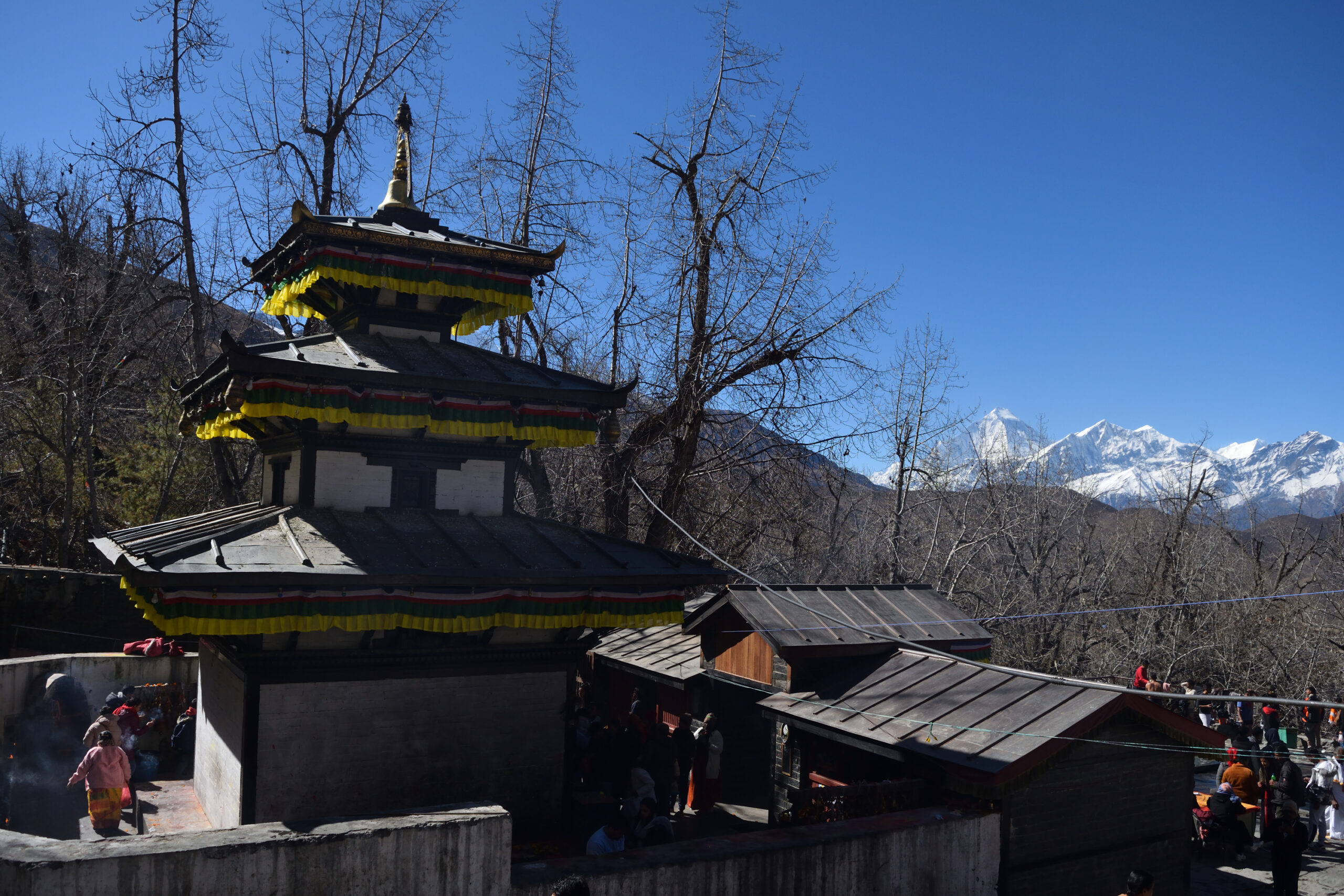The Muktinath Temple, a sacred site for both Hindu and Buddhist pilgrims located in Ward No. 1 of Waragung Muktichhetra Rural Municipality, Mustang, now has two new high-altitude medical centers. These centers have been established to provide emergency medical services to pilgrims and tourists visiting the temple, which is situated at an altitude of 3,710 meters above sea level. The centers are a joint initiative by the Waragung Muktichhetra Rural Municipality and the Gandaki Province government.
Chairman Rinjin Namgel Gurung of Waragung Muktichhetra stated that the medical centers are designed to address the health needs of visitors who may suffer from altitude sickness due to the reduced oxygen levels at such high elevations. “We have stationed medical assistants equipped with necessary medicines and devices to provide immediate care for those affected by altitude sickness,” Gurung said, adding that the centers have already proven effective in saving lives.
For the fiscal year 2081/82, NPR 500,000 was allocated to purchase medicine for the Muktinath Temple Medical Center. Another center has been set up in a shelter along the trail from Ranipauwa to the temple, a facility that was built by the Nepal Army last year. The Gandaki Province government, through Jomsom Hospital, has deployed a medical assistant to this center, according to the hospital’s superintendent, Tejes Nepal. The municipality provides a monthly allowance of NPR 10,000 to the medical staff.
Medical personnel are available at the centers from 6:00 AM to 3:00 PM during peak pilgrimage hours. During the mornings and evenings, services are also available at the Ranipauwa Medical Center, ensuring continuous support for visitors.
In the past, altitude sickness has been a serious concern at Muktinath, with six deaths recorded in the fiscal year 2078/79, rising to 12 in 2079/80, and 14 deaths in 2080/81. Most of the victims were Indian pilgrims, as well as a few Nepali and Ukrainian tourists. However, according to Sanjita Sinjali, the assistant coordinator of the health division of Waragung Muktichhetra Rural Municipality, since the opening of the new medical centers, there have been no reported deaths due to altitude sickness.
Sinjali emphasized that gradual acclimatization to the high altitude, along with rest, is the best way to prevent altitude sickness. She also mentioned that common symptoms include headaches, nausea, and vomiting, and urged anyone experiencing these symptoms to immediately descend to lower altitudes for treatment.
Muktinath Temple, revered as a place where devotees can attain salvation, has seen an increase in visitors thanks to favorable weather conditions, improved road access, and the visit of prominent figures, including Indian Prime Minister Narendra Modi. According to records from the District Police Office, Mustang welcomed 427,000 visitors in the fiscal year 2080/81, with 20,000 arriving during the recent Sora Shraddha period.
Muktinath holds spiritual significance for both Hindus and Buddhists. Hindus refer to it as ‘Muktichhetra,’ while Buddhists know it as ‘Chumig Gyatsa,’ meaning ‘Hundred Waters’ in Tibetan. The presence of 108 water spouts and the sacred Shaligram stones found in the nearby Kali Gandaki River, believed to be a form of Lord Vishnu, further elevate its religious importance.
To enhance the visitor experience, local authorities have made improvements to the temple premises, such as constructing proper pathways to prevent slipping, installing halogen lights for nighttime visibility, and building waste management facilities. The Department of Archaeology has also undertaken efforts to safely manage underground water around the temple area.
Despite these developments, some infrastructure projects, like the trekking trail connecting Ranipauwa to the Muktinath Temple, remain incomplete, according to village chairman Premesh Gurung. Nonetheless, the combined efforts of private and government sectors continue to enhance the facilities around the Muktinath temple, attracting more visitors each year.
Source: RSS






